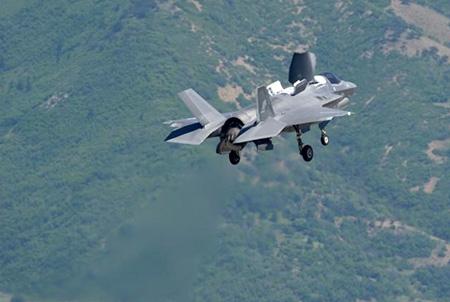The inspection will take place in the Marine Corps Air Station of Yuma, Arizona and will establish the entry into service of the F-35B with Initial Operating Capacity. The 'ORI' will last twelve days. 134 specific hunting factors will be analyzed and a final report will be drawn up immediately afterwards.
Although it is not up to a single body to certify the Initial Operating Capacity of a weapon system, the Marines have no intention of adopting a machine that cannot meet their requirements. For the Pentagon, in fact, the JSF could already enter service.
Should the outcome of the inspection correspond to the needs of the Marines, the F-35B will enter into service (and in the history of aviation) with Initial Operating Capacity. In fact, until a few weeks ago, the start of the inspection was given for certain on July 1st with the conclusion of the tests within two weeks. Now, the Marines have made official the two-week slip.
During ORI, the "Green Knights" of the Marine Fighter Squadron 121, will also have to pass three written exams: one of immediate action, a test of knowledge of the multiple-choice aircraft and one of tactics. The pilots will also carry out four real flights and three on the simulator. They too will be evaluated by the Marine commission.
At the same time, another team of experts will inspect both the maintenance programs and the supplies to the department to ensure that they can meet the needs of an operational squadron consisting of ten F-35Bs.
If we know the beginning of the inspection, the conclusion is uncertain. In fact, if ORI should be concluded by July, it is conceivable that the Marine Corps can declare the Initial Operational Capacity for the same month, but there is no hurry. The military, in fact, reserve the right to take into consideration also the month of August to evaluate the hunt.
The Marine Reminder speaks clearly: "Declare Initial Operational Capability in July and, in any case, by December in case of extreme necessity. If Initial Operational Capacity was announced by August, it would be an absolutely negligible delay. "
At present, a delay in entering the service could only be determined by the Marines. The number one enemy of the F-35B is the information management system called ALIS, considered not yet reliable due to the very high (circal'80%) of false positives reported. The Marine-tested F-35B will be equipped with Block 2B software, but it will be a 'special' version of the fighter. In fact, the Marine squadron, called '1 Group', presents most of the hardware changes already implemented (and that tomorrow will be integrated into mass production) such as reinforced bulkheads. The aircraft could go into battle with 'reduced' equipment: AIM-120 AMRAAM missiles, GBU-12 bombs and GBU-39.
Unlike the V-22 Osprey that the Marine deployed in Iraq shortly after the 'IOC', the F-35 will not enter into war with the Islamic State. The first VMFA-121 squadron will be transferred to the Iwakuni base in Japan in January of 2017 to respond to possible crisis in the region.
Franco Iacch
(photo: US Air Force)












